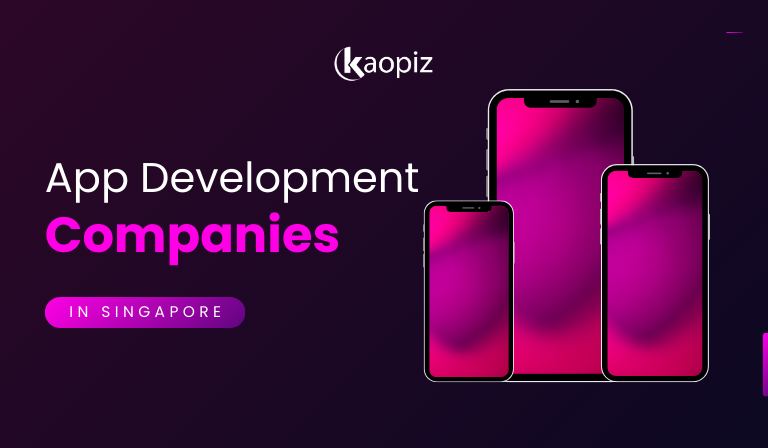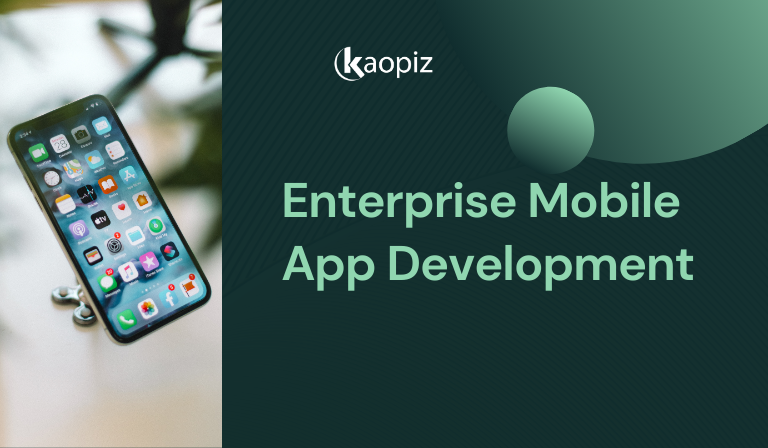How to Make Games Without Programming: 10 No-Code Tools & Singapore-Specific Tips [2025 Guide]
The global games market is booming. According to Statista, revenue is projected to reach $522.46 billion in 2025 and is expected to grow at a CAGR of 7.01%, hitting $733.22 billion by 2030. Alongside this growth, the number of users is anticipated to reach 2.2 billion worldwide, creating unprecedented opportunities for game creators of all sizes.
But here’s the best part: you don’t need to be a professional programmer to be part of this expanding industry. Then, is it possible to make a game without coding? Thanks to no-code game development tools, anyone—from aspiring indie developers in Singapore to businesses exploring gamification—can now make games without programming.
With powerful no-code tools like Unity Visual Scripting, Roblox Studio, and Construct 3, anyone in Singapore—from hobbyists to businesses—can create 2D and 3D games for free or at low cost. This 2025 guide covers the best tools, step-by-step guide and tips to help you turn your game idea into reality without writing a single line of code.
Table of Contents
- What Does “Make Games Without Programming” Mean?
- Benefits & Limitations of Making Games Without Coding
- Best 10 Game Making Tools Without Coding (2025)
- How to Make 3D Game Without Coding: Step-by-Step
- No-Code Game Development in Singapore: Best Practices
- Why Choose Kaopiz for Game Development in Singapore
- Conclusion
- FAQs
What Does “Make Games Without Programming” Mean?
Traditionally, game development required strong programming skills in web application languages like C++, C#, or JavaScript. Today, advances in no-code game engines have changed that. When we talk about “make games without programming”, we mean using visual editors, drag-and-drop interfaces, and ready-to-use templates to create games—no manual coding required.
No-code tools replace lines of code with visual logic blocks, asset libraries, and interactive editors. This makes it possible for:
- Beginners to bring game ideas to life without learning programming.
- Businesses to create gamified apps or training simulations quickly.
- Educators to introduce students to game design concepts.
Therefore, making a game without programming means anyone—whether in Singapore or anywhere in the world—can design, test, and publish a game without writing a single line of code.
No-Code vs Low-Code Game Development
While both no-code and low-code platforms aim to make game creation more accessible, they serve slightly different purposes:
| Aspect | No-Code Game Development | Low-Code Game Development |
|---|---|---|
| Definition | Game creation using visual editors, drag-and-drop systems, and prebuilt templates. | Combines visual tools with minimal scripting for advanced customization. |
| Target Audience | Beginners, indie developers, educators, and businesses creating quick prototypes. | Developers seeking flexibility without full-scale coding. |
| Examples | GDevelop, Construct 3, Roblox Studio, RPG Maker. | Unity (Visual Scripting + optional C#), Unreal Engine (Blueprints + optional C++). |
| Pros | No programming knowledge needed, fast learning curve. | More creative freedom, ability to integrate unique features. |
| Cons | Limited customization for complex mechanics. | Requires some basic coding knowledge to unlock full potential. |
Key Takeaway:
- No-code is ideal for quick, accessible game creation—perfect for Singapore startups, indie creators, and educational projects.
- Low-code is best when you need more customization or plan to scale into a commercial-quality game.
Why Singapore Developers Are Adopting No-Code
Singapore’s gaming market is expanding rapidly, with revenue projected to reach $826.33 million in 2025 and grow to $1.13 billion by 2030. This steady growth is attracting more creators—and no-code tools are lowering the barrier to entry like never before.
- Lower Barrier to Entry: No-code platforms allow hobbyists, students, and small studios to create games without months of programming training—crucial in Singapore’s fast-moving startup ecosystem.
- Rapid Prototyping for Startups and Businesses: Startups and creative agencies use no-code engines to develop prototypes for pitches, demos, or product testing, cutting time-to-market significantly.
- Educational Integration: Institutions in Singapore are introducing Scratch, Roblox Studio, and other no-code platforms into the classroom, making game creation accessible to students.
- Cost Efficiency: With manpower and operational costs high in Singapore, no-code helps minimize resource requirements while still producing quality games.
- Expanding Market Opportunities: As the Southeast Asian gaming market grows, no-code enables Singapore creators to launch and test games quickly, tapping into a rising user base.
Game development without coding empowers Singapore’s developers, educators, and entrepreneurs to make a game without coding faster, cheaper, and at lower risk—perfect for a market set to grow steadily over the next five years.
Benefits & Limitations of Making Games Without Coding
While making games without coding opens the door for more creators, it’s not without trade-offs. Understanding the benefits and limitations will help developers choose the right approach for their project and make a game without coding for free.
Benefits
No-code game development offers multiple advantages for creators in Singapore, from hobbyists to startups:
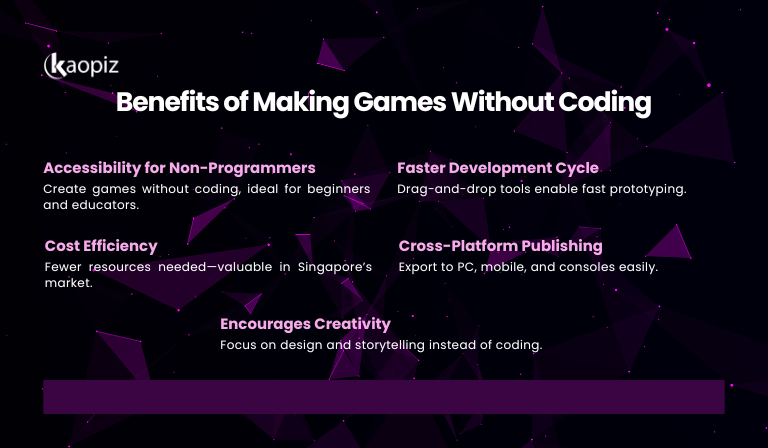
- Accessibility for Non-Programmers: Anyone can create games without learning complex programming languages, making it ideal for beginners and educators.
- Faster Development Cycle: Drag-and-drop tools and prebuilt assets enable rapid prototyping, helping developers bring ideas to life quickly.
- Cost Efficiency: No-code platforms reduce the need for large teams, which is valuable in Singapore’s high-cost business environment.
- Cross-Platform Publishing: Most no-code engines allow exporting to PC, mobile, and even consoles without extra development overhead.
- Encourages Creativity: With technical barriers lowered, creators can focus more on game design, storytelling, and user experience.
Limitations
While no-code game development opens exciting opportunities, there are some important limitations to consider:
- Restricted Customization: Complex mechanics or unique features may be difficult to implement without adding code.
- Performance Constraints: Games built entirely in no-code engines can face optimization challenges, especially for large-scale 3D projects.
- Platform Dependency: Your game’s functionality and updates depend on the capabilities and roadmap of the chosen no-code platform.
- Scalability Issues: As your player base grows, you may need to transition to low-code or fully coded solutions for stability and performance.
- Learning Curve for Advanced Features: While easier than programming, mastering a no-code tool’s full potential still takes time and practice.
Best 10 Game Making Tools Without Coding (2025)
Below are the 10 best no-code tools for game making without coding in 2025—covering 2D, 3D, educational, and genre-specific platforms.
2D Game Engines
2D game engines are ideal for platformers, puzzle games, and retro-style titles. These no-code tools let creators design, animate, and publish 2D games quickly, perfect for beginners, indie studios, and educators.
GameMaker Studio
GameMaker Studio is one of the best game makers without coding for creating 2D games. It offers an intuitive drag-and-drop interface alongside its own optional scripting language (GML) for advanced customization.
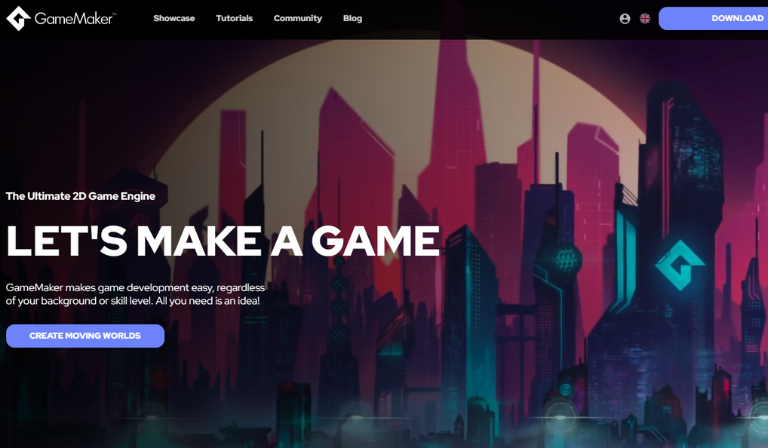
- Best For: Indie developers, beginners, and studios focused on 2D titles.
- Key Features:
- Drag-and-drop game creation.
- Built-in sprite and animation editors.
- Cross-platform export (Windows, macOS, Android, iOS, HTML5, consoles).
- Pros: Easy to learn, large community support, flexible for both no-code and low-code workflows.
- Cons: Subscription pricing; limited native 3D support.
- Popular Games Made with GameMaker Studio: Undertale, Hyper Light Drifter, Katana ZERO, Spelunky, Nuclear Throne
These examples prove that GameMaker Studio is capable of producing commercially successful games—many of which started as small, independent projects.
Construct 3
Construct 3 is a browser-based no-code game engine designed for fast and accessible 2D game creation. Its event-based logic system allows creators to build game mechanics visually, making it one of the easiest platforms for beginners and educators to start making games without programming.
- Best For: Hobbyists, educators, indie developers building 2D mobile or web games.
- Key Features:
- 100% web-based—no installation required.
- Event sheet logic for creating mechanics visually.
- Cross-platform export (HTML5, Android, iOS, Windows, macOS, consoles).
- Pros: Beginner-friendly, accessible on any device, strong tutorials, and community support.
- Cons: Limited 3D capabilities; subscription pricing for full features.
- Popular Games Made with Construct 3: The Next Penelope, Cosmos Defenders, Airscape: The Fall of Gravity, Dicey Dungeons (early development)
Construct 3’s simplicity, portability, and robust export options make it especially appealing for Singapore-based indie studios, educators, and startups who want to make games without programming.
GDevelop
GDevelop is a free, open-source no-code game engine that allows developers to create 2D and simple 3D games with ease. It uses an event-based system that’s simple for beginners yet flexible enough for more advanced creators.
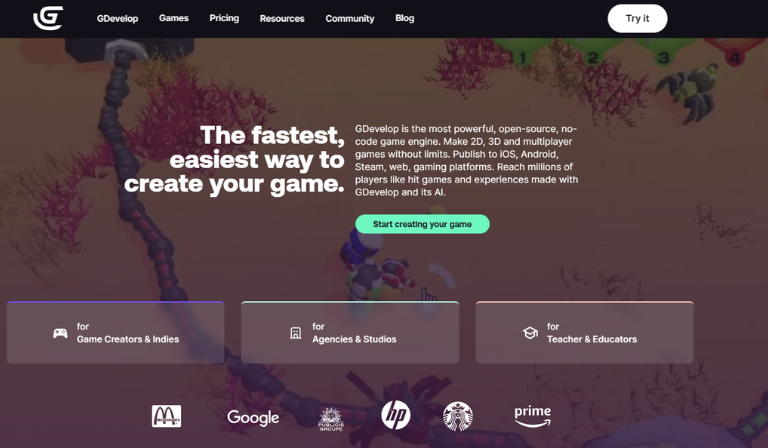
- Best For: Beginners, educators, hobbyists, and indie developers looking for a cost-free solution.
- Key Features:
- Completely free and open-source.
- Drag-and-drop interface with event logic.
- Supports 2D and basic 3D projects.
- Cross-platform export (Windows, macOS, Linux, Android, iOS, HTML5).
- Pros: No cost, beginner-friendly, growing library of extensions, supportive community.
- Cons: Less powerful than premium engines for complex 3D or advanced mechanics.
- Popular Games Made with GDevelop: Lil BUB’s Hello Earth, Vai Juliette, Astray, Hyperspace Dogfights (prototype)
With its zero-cost model and ease of use, GDevelop is the easiest no-code game engine and a strong choice for Singapore educators, students, and indie developers who want to create games without coding quickly and affordably.
3D Game Engines
3D game engines make it possible to create immersive worlds without writing code, using visual scripting and drag‑and‑drop tools. If you are searching for how to make a 3D game without coding for free, you are in the right place.
In 2025, platforms like Unity Visual Scripting, Unreal Engine Blueprints, and Core will give developers the power to design high‑quality 3D games with free pricing plans, accessible to both beginners and professionals.
Unity Visual Scripting
Unity Visual Scripting (formerly known as Bolt) allows developers to create games in Unity without writing traditional code. By using a node-based visual interface, creators can design complex game mechanics and interactions simply by connecting visual logic blocks.
- Best For: Beginners, indie studios, and professionals creating 3D or hybrid 2D/3D games.
- Key Features:
- Node-based scripting for gameplay mechanics.
- Seamless integration with Unity’s asset store and ecosystem.
- Cross-platform publishing (PC, mobile, console, VR, AR).
- Ability to switch between no-code (visual) and low-code (C#) for advanced customization.
- Pros: Industry-standard engine, scalable for large projects, huge community, and resources.
- Cons: Steeper learning curve than simpler no-code tools; complex projects may require some coding.
- Popular Games Made with Unity (Visual Scripting or Hybrid): Escape from Tarkov (prototypes), First-person demos & VR titles, Hobby & prototype projects
Unity Visual Scripting is a game-making software for beginners in Singapore. It is ideal for developers who want to make 3D games without coding professionally, while retaining the flexibility to scale projects into full commercial releases.
Unreal Engine Blueprints
Unreal Engine Blueprints is a powerful visual scripting system that allows developers to make games without programming. Using a node-based workflow, creators can define game mechanics, level interactions, AI behaviors, and UI systems entirely through visual logic.
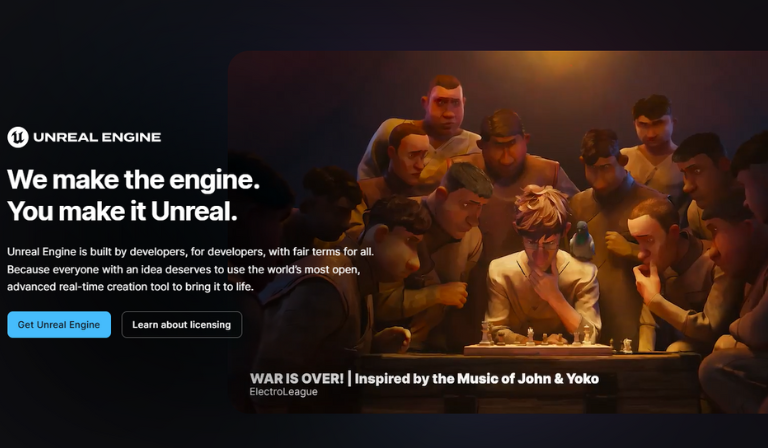
- Best For: Indie developers, professional studios, and creators aiming for high-end 3D games.
- Key Features:
- Node-based scripting system integrated with Unreal Engine.
- Photorealistic rendering and advanced graphics capabilities.
- Cross-platform publishing (PC, console, mobile, VR/AR).
- Seamless transition from no-code (Blueprints) to low-code (C++) for advanced features.
- Pros: AAA-quality visuals, robust visual scripting, widely used in professional game studios.
- Cons: Requires powerful hardware; learning curve for mastering the editor and toolsets.
- Popular Games Made with Unreal Engine Blueprints: Fortnite, Sea of Thieves, Hellblade: Senua’s Sacrifice, The First Tree
For Singapore developers looking to create visually impressive 3D games without coding, Unreal Engine Blueprints, a great video game creation software, provides professional-grade capabilities that scale from indie projects to blockbuster titles.
Core
Core is a no-code game creation platform built on Unreal Engine that allows developers to design, publish, and share 3D games quickly. It offers a library of prebuilt assets, templates, and visual scripting tools, making it a fast way to prototype and release games without coding.
- Best For: Indie creators, hobbyists, and studios focusing on multiplayer and social games.
- Key Features:
- Drag-and-drop level design with modular assets.
- Visual scripting powered by Unreal Engine.
- Built-in multiplayer functionality.
- Direct publishing to the Core platform for instant player access.
- Pros: Rapid development, integrated asset marketplace, strong multiplayer support.
- Cons: Limited export options (games are primarily played on the Core platform).
- Popular Games Made with Core: Shadow Arena, Multiverse Explorers, Survival Island
Core is a strong choice for Singapore developers who want to quickly launch multiplayer or social experiences without building complex server infrastructure.
Education & Beginner Platforms
Education and beginner platforms make game creation accessible to students, hobbyists, and first-time developers. Tools like Scratch and Roblox Studio are widely used in Singapore’s schools and communities to teach game design fundamentals without coding.
Scratch
Scratch is one of the most popular beginner-friendly, no-code game creation platforms, developed by MIT. It uses a block-based visual programming system that allows users to create interactive games, animations, and stories without writing code.
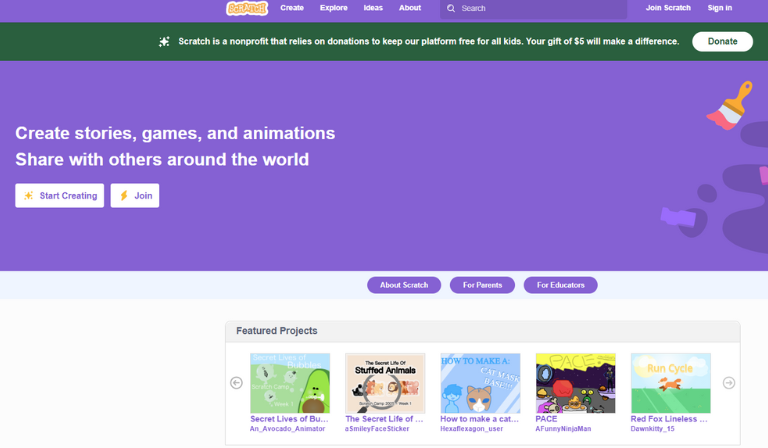
- Best For: Students, educators, hobbyists, and first-time game creators.
- Key Features:
- Drag-and-drop block programming interface.
- Large library of sprites, sounds, and backgrounds.
- Strong global community with project sharing.
- Runs directly in the browser—no installation required.
- Pros: Completely free, extremely beginner-friendly, widely used in schools (including in Singapore).
- Cons: Limited capabilities for advanced or commercial projects.
- Popular Games & Projects Made with Scratch: Geometry Dash Remakes, Flappy Bird Clones, Adventure & Story Games
Scratch is a key educational tool, used in primary and secondary schools, coding clubs, and enrichment centers in Singapore to introduce students to game design and logical thinking.
Roblox Studio
Roblox Studio is a free game creation platform that allows users to build, publish, and monetize games on the Roblox ecosystem. While it supports scripting with Lua, it also offers drag-and-drop tools, templates, and prebuilt assets, making it accessible for beginners who want to create without heavy coding.
- Best For: Hobbyists, indie developers, educators, and creators targeting multiplayer or social games.
- Key Features:
- Built-in level editor and prebuilt templates.
- Massive asset library from the Roblox community.
- Multiplayer and social integration by default.
- Cross-platform publishing (PC, mobile, console).
- Pros: Free to use, large player base, built-in monetization via Roblox Marketplace.
- Cons: Games are restricted to the Roblox ecosystem; limited control over advanced backend systems.
- Popular Games Made with Roblox Studio: Adopt Me!, Brookhaven, Tower of Hell
In Singapore, Roblox Studio is widely used by young developers, indie teams, and educators, with a strong community of creators designing games for a global audience.
Genre-Specific Engines
Genre-specific game engines focus on particular styles of games, offering prebuilt systems tailored to that genre. Tools like RPG Maker and Buildbox make it easy to create role-playing games, puzzle adventures, and interactive stories without coding.
RPG Maker
RPG Maker is a specialized no-code game engine designed for creating classic role-playing games. It features a map editor, event system, and built-in database for characters, skills, items, and enemies—making it one of the easiest ways to create story-driven games without programming.
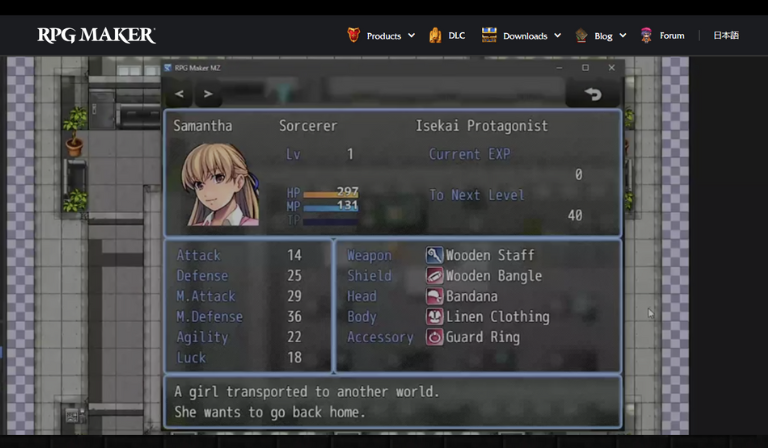
- Best For: Storytellers, indie developers, educators, and hobbyists creating role-playing or narrative games.
- Key Features:
- Tile-based map editor with drag-and-drop assets.
- Built-in battle systems (turn-based combat).
- Extensive database for items, characters, and events.
- Export to PC, mobile, and console.
- Pros: Very beginner-friendly, fast development for RPGs, large library of community-made assets.
- Cons: Limited flexibility outside the RPG genre; games may have a “default RPG Maker look” unless customized.
- Popular Games Made with RPG Maker: To the Moon, Lisa: The Painful, OneShot, Finding Paradise
RPG Maker is used by indie creators and game design students in Singapore to craft narrative-rich projects, prototypes, and experimental story games.
Buildbox
Buildbox is a no-code game development platform known for its ability to create hyper-casual and mobile games quickly. With a drag-and-drop interface, ready-made templates, and an asset library, it enables creators to build polished games without writing a single line of code.
- Best For: Indie developers, hobbyists, and studios targeting mobile and hyper-casual games.
- Key Features:
- Visual drag-and-drop editor for building game logic.
- Built-in asset store with characters, objects, and environments.
- Cross-platform publishing to iOS, Android, and desktop.
- Built-in monetization options like ads and in-app purchases.
- Pros: Extremely fast development cycle, ideal for mobile-first games, beginner-friendly interface.
- Cons: Limited flexibility for complex genres; free version has export restrictions.
- Popular Games Made with Buildbox: Color Switch, The Line Zen, Ball Jump
In Singapore, Buildbox is appealing to indie developers and small studios who want to quickly prototype or release mobile games, especially in the fast-growing hyper-casual market.
How to Make 3D Game Without Coding: Step-by-Step
Creating a 3D game without programming is easier than ever in 2025, thanks to visual scripting tools in engines like Unity, Unreal Engine, and Core. Here’s a simple step-by-step process for beginners and indie developers on how to make a game without code:
- Step 1: Choose the Right No-Code 3D Engine
Select a platform that matches your game’s needs, such as Unity Visual Scripting (Flexible for most 3D game types), Unreal Engine Blueprints (Ideal for high-end visuals and AAA-level graphics), or Core (Great for multiplayer and quick releases).
- Step 2: Plan Your Game Concept
Define your game genre, mechanics, story, and target audience. Create a simple game design document to guide development.
- Step 3: Gather or Create Assets
Use built-in asset libraries, online marketplaces, or create your own: 3D models (characters, environments, props), textures and materials, and sounds and music.
- Step 4: Build Your Game World Visually
Use the engine’s drag-and-drop interface to create levels, place objects, and set up environments. Visual scripting handles character movement, enemy AI, and interactions.
- Step 5: Test and Optimize
Regularly playtest your game: Check gameplay balance, optimize performance, and fix bugs in mechanics or visuals.
- Step 6: Export and Publish
Once ready, export your game to your target platform—PC, mobile, console, or VR. Engines like Unity and Unreal support cross-platform publishing directly.
No-Code Game Development in Singapore: Best Practices
As Singapore’s gaming market grows, no-code game development offers a fast, cost-effective way for creators to launch games. Following best practices can help you choose game engines without coding and ensure your projects are polished, market-ready, and scalable for long-term success.
- Start Small and Validate Quickly: Begin with software development requirements. Request a prototype or minimum viable product (MVP) to test gameplay concepts before committing to a full game build.
- Leverage Local Communities: Join Singapore game dev meetups, hackathons, and online groups (such as SGGA and GameDevSG) to network, get feedback, and find collaborators.
- Focus on Mobile-First Design: With Singapore’s high mobile usage, prioritize mobile optimization for better reach in both local and Southeast Asian markets.
- Incorporate Market Insights Early: Track local gaming trends, genres, and monetization models to ensure your no-code game resonates with players in Singapore and SEA.
- Utilize Local Talent for Art & Assets: Partner with Singapore-based designers and musicians for unique cultural elements that help your game stand out.
- Optimize for Performance: Even with no coding game engines, test on multiple devices to ensure smooth gameplay—especially for mobile and multiplayer games.
- Plan for Scalability: If your game gains traction, work with a development partner (like Kaopiz) to transition from no-code to low-code for advanced features and stability.
Why Choose Kaopiz for Game Development in Singapore
As the Singapore gaming market continues to grow, developers need more than just no-code tools to make games without programming—they need a partner who can help them build, scale, and optimize their games for success. That’s where Kaopiz comes in, offering professional no‑code game development services in Singapore.

- Expertise Across Engines: Our team is experienced in no-code/low-code platforms, ensuring your game or app development is built with the right tools.
- From Prototype to Market-Ready Product: We help clients start with rapid prototyping, then refine, optimize, and scale their games for commercial launch—supporting mobile, PC, console, and VR platforms.
- Custom Asset Creation & Integration: Kaopiz offers custom 2D/3D art, animations, and sound design, so your game has a unique style that stands out in Singapore and global markets.
- Performance Optimization & Scalability: We ensure your no-code games run smoothly on all devices and can scale to handle thousands—or even millions—of players.
- Cross-Market Expertise: With 150+ clients in Singapore, Japan, the US, and beyond, Kaopiz understands how to adapt games for different markets and player preferences.
Choosing Kaopiz means partnering with a trusted game development outsourcing company in Singapore that can turn your no-code concept into a professional, market-ready success story.
Conclusion
In 2025, with powerful no-code tools like Unity Visual Scripting, Unreal Engine Blueprints, Roblox Studio, and RPG Maker, anyone—from indie creators to studios in Singapore—can make games without programming and bring their ideas to life quickly and affordably.
By following best practices and choosing the right platforms, your no-code game can compete in both local and global markets.
FAQs
- Which Is the Best Game Making Software without Coding in Singapore?
- Popular options include Unity Visual Scripting, Unreal Engine Blueprints, Construct 3, Roblox Studio, and RPG Maker. The best choice depends on your target platform, game genre, and budget.
- Can I Make Games without Coding on Mobile?
- Yes, you can make games without coding on mobile. Tools like Buildbox and Roblox Studio allow you to create and even publish games directly from mobile devices, though desktop tools provide more advanced features.
- Can Kaopiz Help Upgrade a No-Code Game to Advanced Features?
- Absolutely. Kaopiz specializes in transitioning no-code prototypes to low-code or full-code solutions, adding custom features, better performance, and scalability.
- How Much Does It Cost to Make a Game without Coding in Singapore?
- Costs vary based on engine, assets, and scope. Simple no-code projects can start from a few hundred dollars, while commercial-grade games with custom assets may range from $5,000 to $50,000+.
- Can No-Code Games Scale to Millions of Users?
- Yes, but performance optimization is key. Many successful titles start on no-code platforms and scale with professional development support— something Kaopiz provides to ensure stability and growth.


















